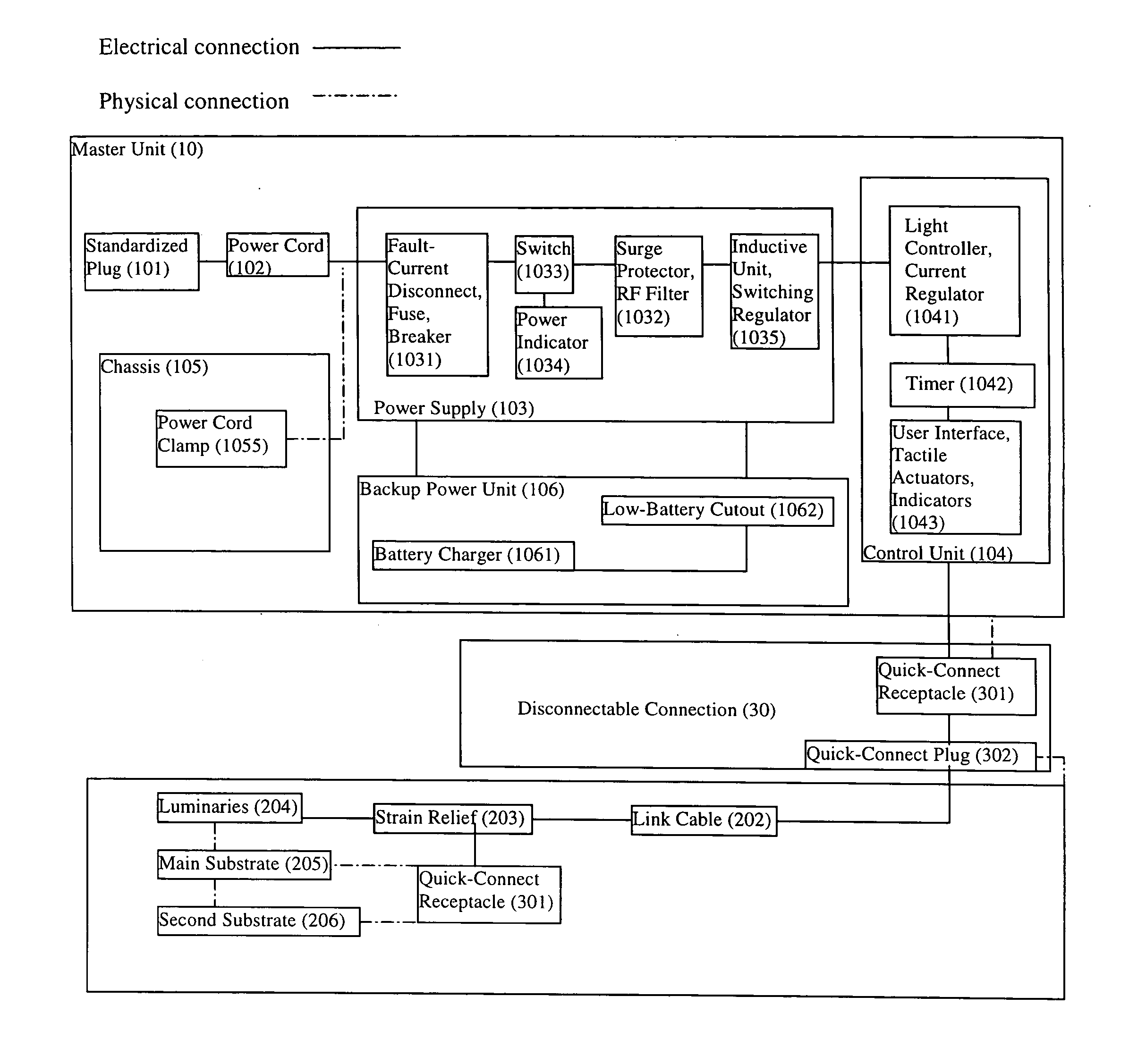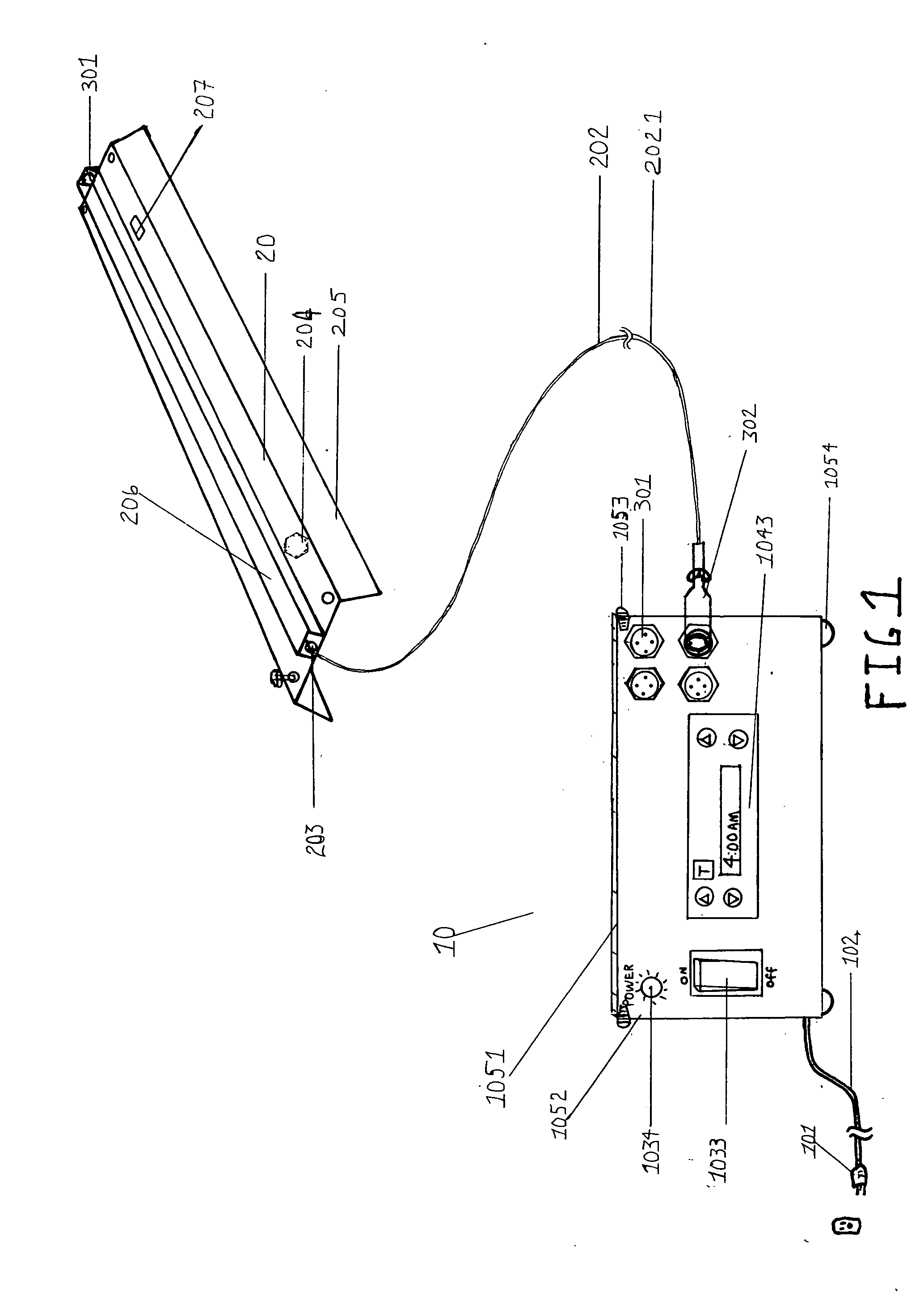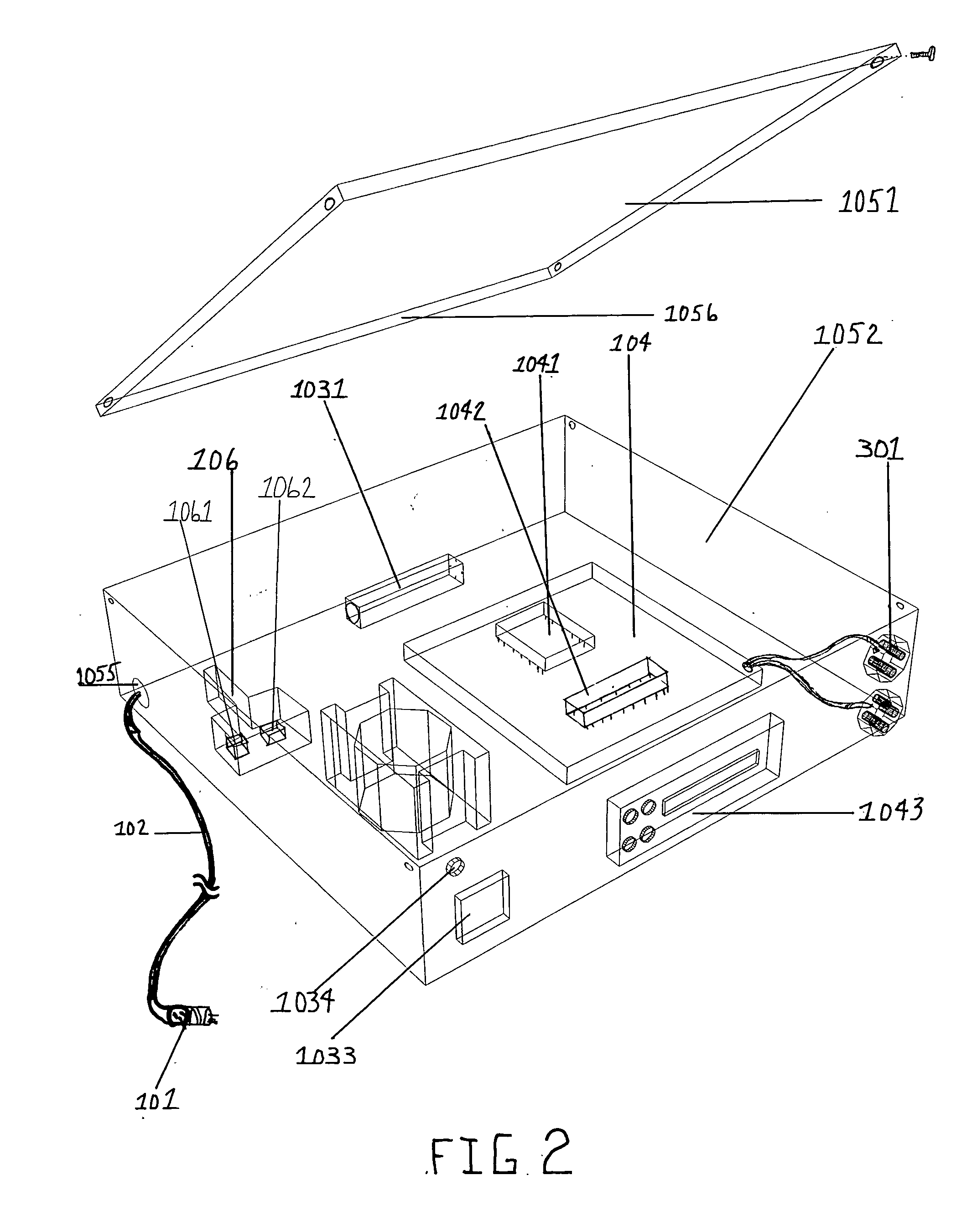Horticultural lighting system
- Summary
- Abstract
- Description
- Claims
- Application Information
AI Technical Summary
Benefits of technology
Problems solved by technology
Method used
Image
Examples
Embodiment Construction
[0060] As will become evident by further study of the drawings, the present invention relates to a versatile lighting system especially for plant-growth illumination.
[0061] According to the preferred embodiment of the present invention, FIG. 1 of the drawings shows the horticultural lighting system comprising a master unit 10 and fixture 20. The master unit 10 includes a standardized plug 101 affixed to the end of a power cord 102 and attached to a chassis 105.
[0062] The chassis 105 comprises a lid 1051, a main housing 1052, fastening screws 1053, rubber feet 1054 and a power cord clamp or gland 1055. The chassis 105 houses a power supply 103 which includes a fuse 1031, a surge protector 1032, a switch 1033, a power indicator 1034 and an inductive unit 1035. The chassis 105 also houses a control unit 104 which includes a light controller 1041, a timer 1042 and a user interface 1043. In a preferred embodiment, a backup power unit 106 interfaces with the power supply 103. The backup...
PUM
 Login to View More
Login to View More Abstract
Description
Claims
Application Information
 Login to View More
Login to View More - R&D
- Intellectual Property
- Life Sciences
- Materials
- Tech Scout
- Unparalleled Data Quality
- Higher Quality Content
- 60% Fewer Hallucinations
Browse by: Latest US Patents, China's latest patents, Technical Efficacy Thesaurus, Application Domain, Technology Topic, Popular Technical Reports.
© 2025 PatSnap. All rights reserved.Legal|Privacy policy|Modern Slavery Act Transparency Statement|Sitemap|About US| Contact US: help@patsnap.com



